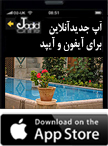The movement for the introduction of a constitutional system of government in Iran -Mashrouteh- reached its height in the summer of 1906 and resulted in the establishment of the first National Assembly in Iran. This lasted for nearly two years, until the supporters of the monarchy were able to crush the Constitutionalists and bombarded the Parliament building in June 1908. Many of its leaders were imprisoned, executed or forced into exile. It was at first only in Tabriz that there were signs of opposition to the violent reintroduction of absolute government. Over some months this developed into a widespread conflict, with Tabriz at the centre of the action.
It was at this time that a prominent Tabriz merchant and a key Constitutionalist supporter, Mehdi Kuzeh Kanani, put his house at the disposal of the Constitutionalists in Tabriz. It became the headquarters of their activities during the intense conflict which went on for nearly a year before they marched on the capital and defeated Mohammad Ali Shah and his supporters. In the ‘History of the Mashrouteh’, the historian Ahmad Kasravi describes how the house was bravely defended against the attacks of the government forces.
It is believed that the house was built by a leading Tabriz architect, Haj Vali, after he returned from Russia in 1868. It is a two storey building in the style of the Qajar period, comprising two separate private and public quarters. Its vast reception room on the upper floor has three enormous coloured glass windows, each divided into three sash windows. An attractive, highly unusual stained glass skylight, sculpted columns, and intricately carved wooden doors adorn this historic house. It also contains an interesting collection of various items, artefacts, and documents of the period.
The building was bought by the Cultural Heritage Organization in 1988, and opened as a museum after renovations in 1996. In this multimedia report, the curator of the museum, Zahra Ghafari Laleh takes us on a guided tour of this magnificent house and many of its exhibits.


